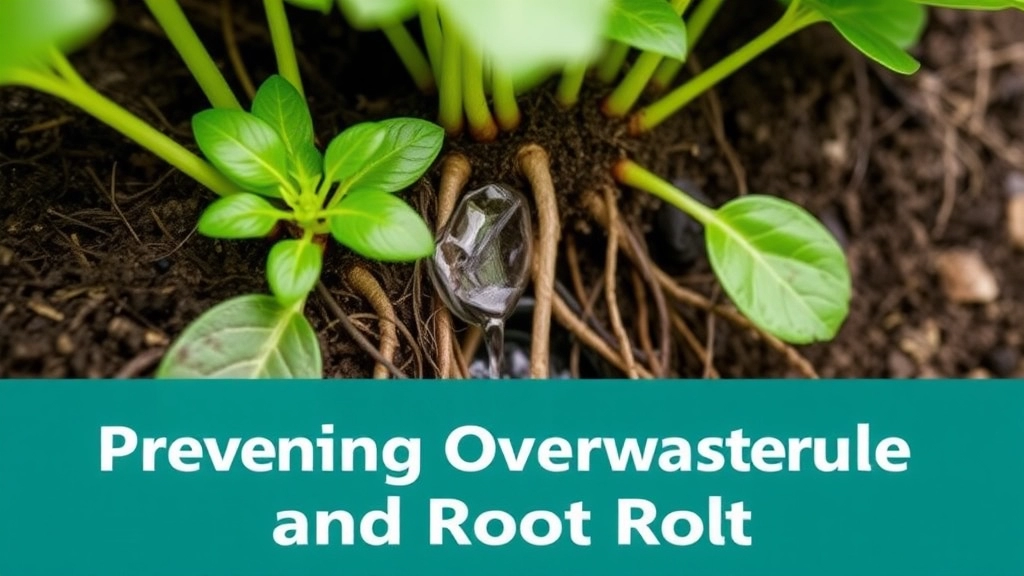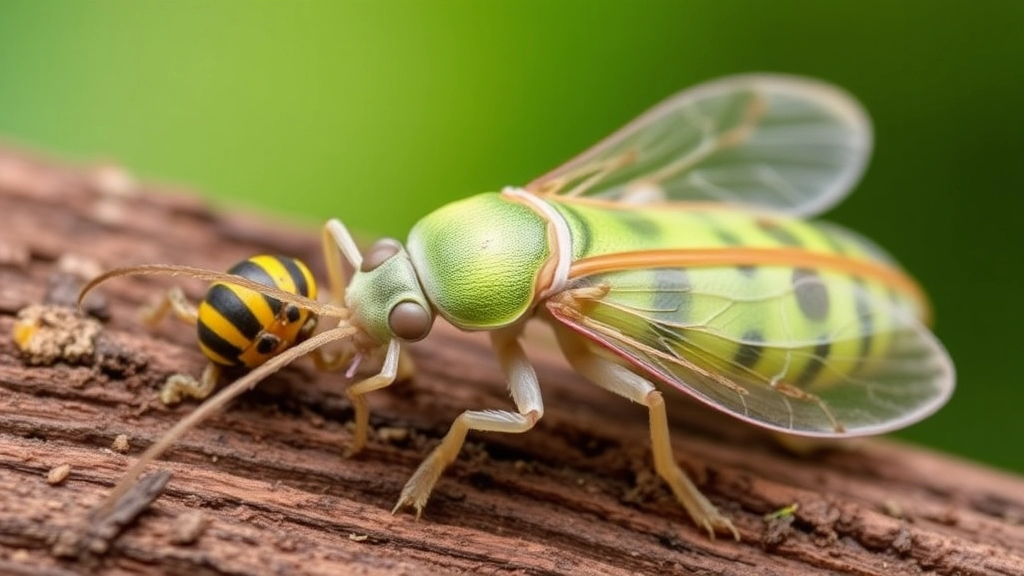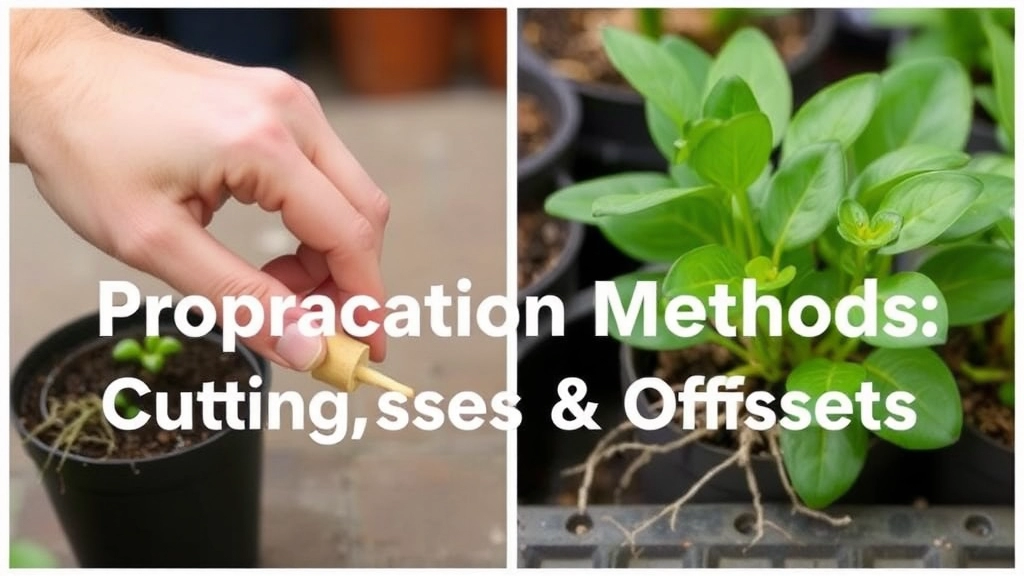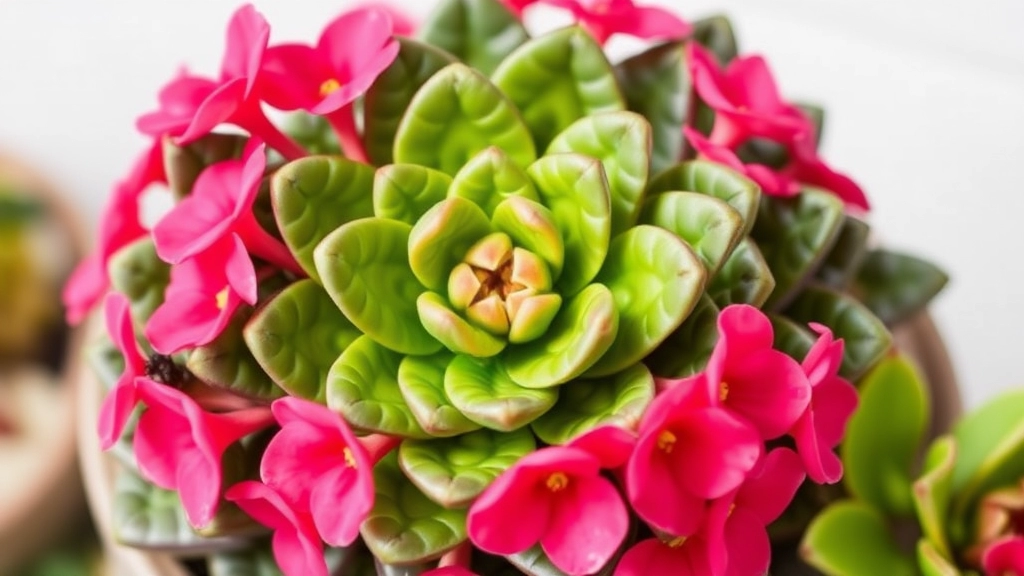Florist Kalanchoe Plant Care
When it comes to florist Kalanchoe plant care, getting the basics right can make all the difference. I’ve found that optimal light conditions are crucial. These vibrant succulents thrive in bright, indirect sunlight. Too much direct sun can scorch the leaves, while too little light can stunt their growth. Finding that sweet spot ensures your kalanchoe stays healthy and blooms beautifully.
Watering is another key aspect. Overwatering is a common mistake that can lead to root rot. I always let the soil dry out between waterings to prevent this. Using well-draining soil helps too, as kalanchoes prefer not to sit in water. Remember, it’s better to underwater than overwater these resilient plants.
Optimal Light Conditions for Florist Kalanchoe
When it comes to keeping your Florist Kalanchoe thriving, one of the most pressing concerns is ensuring it receives the right amount of light. Have you ever noticed your plant stretching towards the window or losing its vibrant colours? These are signs that its light conditions may not be optimal.
Understanding Light Requirements
Florist Kalanchoe, a succulent native to Madagascar, flourishes in bright, indirect sunlight. Here are some key points to consider:
- Direct Sunlight: While Kalanchoe can tolerate some direct sunlight, too much can scorch its leaves. Aim for around 6 hours of bright, indirect light daily.
- Artificial Light: If natural light is limited, consider using grow lights. LED or fluorescent lights can provide the necessary spectrum for healthy growth.
- Signs of Insufficient Light: If your Kalanchoe is becoming leggy or its leaves are turning yellow, it may not be getting enough light.
- Rotating the Plant: To ensure even growth, rotate your Kalanchoe every few weeks. This will help all sides receive adequate light.
Seasonal Adjustments
As the seasons change, so do the light conditions. During winter, you may need to move your Kalanchoe closer to the window to compensate for reduced daylight. For more tips on how to care for this beautiful plant, check out our Florist Kalanchoe Propagation Guide.
If you’re also interested in other varieties, don’t miss our Kalanchoe Succulent Identification Guide for a comprehensive look at different types and their unique traits.
Watering Schedule: Preventing Overwatering and Root Rot

So, you’ve got your Florist Kalanchoe and you’re eager to keep it thriving. But wait—how often should you water it? This is a common concern for many plant lovers.
Understanding Watering Needs
Kalanchoe is a succulent, which means it stores water in its leaves. This makes it pretty forgiving when it comes to drought. But overwatering? That’s a whole different story.
Here’s what you need to know:
- Check the Soil: Stick your finger about an inch into the soil. If it feels dry, it’s time to water. If it’s still moist, hold off.
- Watering Frequency: Generally, you’ll want to water every 2-3 weeks during the growing season (spring and summer). In autumn and winter, you can cut back to once a month.
- Watering Technique: When you do water, give it a good soak. Let the water drain out of the bottom of the pot. This ensures the roots get what they need without sitting in water.
Signs of Overwatering
Keep an eye out for these red flags:
- Yellowing Leaves: If the leaves are turning yellow and mushy, your Kalanchoe might be drowning.
- Root Rot: If you notice a foul smell when you check the roots, it’s time to act. Trim away any rotten parts and repot in fresh, dry soil.
By mastering your watering schedule, you’ll help your Kalanchoe flourish without the fear of root rot.
Choosing the Right Soil for Kalanchoe Health
When it comes to keeping your Florist Kalanchoe thriving, the right soil is crucial. Many plant enthusiasts often overlook this aspect, but it can make all the difference in your plant’s overall health.
What Soil Does Kalanchoe Need?
Kalanchoe prefers well-draining soil that mimics its native arid environment. Here are some key points to consider:
- Cactus or Succulent Mix: Look for a commercial cactus or succulent potting mix. These are specifically designed to provide excellent drainage.
- DIY Soil Mix: If you prefer a homemade option, combine:
- 2 parts potting soil
- 1 part perlite or coarse sand
- 1 part orchid bark or pumice
- pH Level: Aim for a slightly acidic to neutral pH (between 6.0 and 7.0). This range supports optimal nutrient uptake.
Signs of Poor Soil
Keep an eye out for these indicators that your soil might not be suitable:
- Yellowing Leaves: This could signal overwatering, often linked to compacted or water-retaining soil.
- Root Rot: If you notice a foul smell or mushy roots upon inspection, it’s time to reconsider your soil choice.
Repotting Considerations
When repotting, always use fresh soil to prevent the build-up of salts and pathogens. It’s an excellent opportunity to refresh your plant’s environment. For more detailed guidance, check out our best soil for Kalanchoe Blossfeldiana care tips and learn how to plant Kalanchoe in a pot with our step-by-step guide.
Temperature and Humidity Preferences

When it comes to caring for your Florist Kalanchoe, understanding its temperature and humidity preferences is crucial. You might find yourself asking, “What temperature should I keep my Kalanchoe at?” or “Is my home too humid for my plant?” These are common concerns, and addressing them can make all the difference in your plant’s health.
Ideal Temperature Range
Florist Kalanchoe thrives best in a temperature range of 18°C to 24°C (65°F to 75°F).
- Daytime Temperatures: Aim for the higher end of this range during the day.
- Nighttime Temperatures: A slight drop at night is acceptable, but avoid temperatures below 10°C (50°F).
Humidity Levels
Kalanchoe is a succulent, meaning it prefers lower humidity levels.
- Optimal Humidity: Keep humidity around 40% to 60% for best results.
- Avoid High Humidity: Excessive moisture can lead to fungal issues and root rot.
Tips for Maintaining Ideal Conditions
- Use a Thermometer: Monitor the temperature in your plant’s location.
- Avoid Drafts: Keep your Kalanchoe away from cold drafts or heat sources like radiators.
- Consider a Humidifier: If your home is particularly dry, a humidifier can help maintain the right balance.
How to Encourage Blooming in Florist Kalanchoe
When it comes to getting your Florist Kalanchoe to bloom, many plant enthusiasts often wonder what specific steps they can take.
Understanding Blooming Triggers
To promote vibrant blooms, it’s essential to understand the factors that influence flowering. Here are some key elements:
- Light Exposure:
- Kalanchoe thrives in bright, indirect sunlight.
- Aim for at least 6 hours of light each day.
- Temperature Control:
- Ideal temperatures range from 18°C to 24°C.
- Protect your plant from drafts and extreme heat.
- Watering Practices:
- Allow the soil to dry out between waterings.
- Overwatering can hinder blooming, so be cautious.
- Fertilisation:
- Use a balanced, water-soluble fertiliser every 4-6 weeks during the growing season.
- A high phosphorus fertiliser can encourage flowering.
Managing Dark Periods
Kalanchoe requires a specific light cycle to trigger blooming:
- Short Days:
- To induce flowering, provide 14-16 hours of darkness.
- Consider using a blackout cloth if necessary.
- Pruning:
- After blooming, prune back the spent flowers.
- This helps redirect energy to new growth.
Patience is Key
Encouraging your Kalanchoe to bloom may take time, but with the right conditions, you’ll be rewarded with stunning flowers. For more detailed care tips, check out our Kalanchoe Blossfeldiana Flowering Period Care Tips. Additionally, if you’re interested in the various types of Kalanchoe plants, our Ultimate Guide to Growing and Caring for Kalanchoe is a must-read.
Common Pests and How to Manage Them

So, you’ve got your Florist Kalanchoe looking vibrant, but wait—what’s that? Tiny critters causing havoc?
Don’t fret! Pests can be a real pain, but with the right approach, you can keep your plant healthy and thriving.
Common Pests to Watch Out For
- Mealybugs
These little white cotton-like bugs love to hide in the leaf axils.
They suck the sap, leaving your Kalanchoe weak. - Spider Mites
Tiny and often invisible, they create webs and cause yellowing leaves.
They thrive in dry conditions, so keep an eye out! - Aphids
Small and green, these pests can multiply quickly.
They also suck sap and can lead to sticky leaves. - Scale Insects
These look like small bumps on the stems and leaves.
They can be tough to spot but can cause significant damage.
How to Manage Pests
- Regular Checks
Inspect your Kalanchoe weekly.
Catching pests early makes a world of difference. - Natural Remedies
- Neem Oil: Mix with water and spray on affected areas.
- Insecticidal Soap: A gentle way to tackle pests without harming your plant.
- Isolation
If you find pests, isolate the affected plant.
This helps prevent the spread to your other greens. - Maintain Humidity
Spider mites love dry air.
A humid environment can deter them. - Encourage Beneficial Insects
Ladybugs and lacewings are natural pest predators.
They can help keep the bad guys in check.
Repotting Kalanchoe for Healthy Growth
Have you noticed your Kalanchoe looking a bit cramped or its growth slowing down? Repotting could be the solution you need for a thriving plant.
Repotting your Kalanchoe is essential for its long-term health and blooming potential. Here’s a straightforward guide to ensure a successful repotting process.
When to Repot
- Signs of Root Bound: If roots are growing out of the drainage holes or circling the pot, it’s time to repot.
- Soil Degradation: If the soil appears compacted or has lost nutrients, consider repotting.
- Growth Stagnation: If your Kalanchoe has stopped growing or blooming, a new pot can provide the space and nutrients it needs.
Choosing the Right Pot
- Size Matters: Select a pot that is 1-2 inches larger in diameter than the current one.
- Drainage: Ensure the new pot has adequate drainage holes to prevent water accumulation.
Preparing for Repotting
- Gather Supplies: You’ll need fresh potting soil, a new pot, and gardening gloves.
- Water the Plant: A day before repotting, water your Kalanchoe. This makes it easier to remove from its current pot.
The Repotting Process
- Remove the Plant: Gently squeeze the sides of the pot to loosen the soil and roots. Carefully pull the plant out.
- Inspect the Roots: Trim any dead or rotting roots with clean scissors.
- Add Fresh Soil: Place a layer of fresh potting soil in the new pot.
- Position the Plant: Set the Kalanchoe in the centre and fill around it with more soil, ensuring it sits at the same depth as before.
- Water Lightly: After repotting, give it a light watering to help settle the soil.
Aftercare
- Location: Keep your repotted Kalanchoe in a spot with optimal light but avoid direct sunlight for a few days.
- Monitor Watering: Adjust your watering schedule as the plant acclimates to its new home.
For more detailed care tips, check out our Kalanchoe Blossfeldiana Hybrid Care Guide and learn about the ideal temperature for Kalanchoe Blossfeldiana growth.
Propagation Methods: Cuttings and Offsets

So, you’ve got a thriving Florist Kalanchoe and you’re thinking about expanding your plant family? Great choice! Propagating Kalanchoe is not only rewarding but also a fantastic way to share these beauties with friends and family.
Cuttings
One of the easiest ways to propagate Kalanchoe is through cuttings. Here’s how to do it:
- Choose the Right Stem: Look for healthy stems that are about 4-6 inches long. Avoid any that look wilted or damaged.
- Make the Cut: Using clean, sharp scissors, cut just below a leaf node. This is where new roots will sprout.
- Let it Callus: Place the cutting in a dry spot for a few hours or overnight. This helps the cut end form a protective callus, reducing the risk of rot.
- Planting: Once callused, stick the cutting into a pot filled with well-draining soil. Water lightly, just enough to settle the soil around the cutting.
- Light and Care: Place the pot in a bright, indirect light spot. Keep the soil slightly moist but not soggy. In a few weeks, you should see new growth!
Offsets
Offsets are another fantastic way to propagate Kalanchoe. These are small plants that grow at the base of the parent plant. Here’s how to go about it:
- Identify Offsets: Look for small plants sprouting around the base of your Kalanchoe. They should have a few roots of their own.
- Gently Remove: Carefully dig around the offset and lift it out, ensuring you don’t damage the roots.
- Replant: Place the offset in its own pot with fresh soil. Water lightly and place it in a bright spot.
- Care: Just like with cuttings, keep the soil slightly moist and watch for new growth.
Both methods are simple and effective, and before you know it, you’ll have a mini Kalanchoe collection!
### Seasonal Care Tips: Indoor vs. Outdoor Maintenance
When it comes to nurturing your Florist Kalanchoe, understanding the seasonal requirements for indoor and outdoor care can make all the difference. You might be wondering how to best adapt your care routine as the seasons change.
#### Indoor Maintenance
For indoor Kalanchoe, the key is to mimic natural conditions as closely as possible:
– **Light**: Ensure your plant receives bright, indirect sunlight. A south-facing window is ideal, but be wary of direct sun exposure, which can scorch the leaves.
– **Temperature**: Keep indoor temperatures between 18-24°C. Avoid cold drafts and sudden temperature changes to maintain optimal growth.
– **Watering**: During winter, reduce watering frequency. Allow the soil to dry out completely between waterings.
– **Humidity**: Indoor air can be dry, especially in winter. A humidity tray or occasional misting can help maintain a comfortable environment.
#### Outdoor Maintenance
If you’ve placed your Kalanchoe outdoors, seasonal care takes on a different approach:
– **Light**: Position your plant in a spot that receives morning sun and afternoon shade. This helps prevent overheating.
– **Temperature**: Kalanchoe is sensitive to frost. Bring your plant indoors if temperatures drop below 10°C.
– **Watering**: Outdoor plants may require more frequent watering in the summer. However, ensure the soil dries out between waterings to avoid root rot.
– **Humidity**: Outdoor humidity levels are generally higher, but during dry spells, consider misting to keep the plant hydrated.
For more specific care tips, you might find our [Complete Care Guide for Kalanchoe Blossfeldiana](https://planthq.org/complete-care-guide-for-kalanchoe-blossfeldiana-succulent/) helpful. Additionally, if you’re curious about the different varieties and their requirements, check out our [Comprehensive Kalanchoe Species List for Gardeners](https://planthq.org/comprehensive-kalanchoe-species-list-for-gardeners/).
FAQs on Florist Kalanchoe Plant Care
How often should I water my Florist Kalanchoe?
Kalanchoe is a succulent and does not require frequent watering. Generally, water every 2-3 weeks during the growing season (spring and summer) and reduce to once a month in autumn and winter. Always check the soil first; if it feels dry an inch below the surface, it’s time to water.
What are the signs of overwatering my Kalanchoe?
Signs of overwatering include yellowing leaves and a mushy texture. If you notice a foul smell when checking the roots, it could be root rot. Trim any rotten parts and repot in fresh, dry soil.
What temperature range is ideal for Florist Kalanchoe?
Kalanchoe thrives best in a temperature range of 18°C to 24°C (65°F to 75°F). Aim for the higher end during the day and avoid temperatures below 10°C (50°F) at night.
What humidity levels are best for Kalanchoe?
Kalanchoe prefers lower humidity levels, ideally around 40% to 60%. Excessive moisture can lead to fungal issues and root rot.
What are the common pests that affect Kalanchoe?
Common pests include mealybugs, spider mites, aphids, and scale insects. Regular checks and natural remedies like neem oil or insecticidal soap can help manage these pests.
How can I propagate my Florist Kalanchoe?
You can propagate Kalanchoe through cuttings or offsets. For cuttings, choose a healthy stem, let it callus, and plant it in well-draining soil. For offsets, gently remove small plants sprouting at the base and replant them in fresh soil.
Can I keep my Kalanchoe near a window?
Yes, Kalanchoe enjoys bright, indirect light. Placing it near a window that gets plenty of light but not direct sunlight for extended periods is ideal.
What should I do if my Kalanchoe’s leaves are turning yellow?
Yellowing leaves can be a sign of overwatering. Check the soil moisture and adjust your watering schedule accordingly. Also, inspect for pests and root rot.
Is it necessary to use a humidifier for my Kalanchoe?
While Kalanchoe prefers lower humidity, if your home is particularly dry, using a humidifier can help maintain the right balance, especially to deter spider mites.
How do I deal with root rot in my Kalanchoe?
If you suspect root rot, remove the plant from its pot, trim away any rotten roots, and repot in fresh, dry soil. Adjust your watering schedule to prevent future occurrences.
References
-
How to Grow Kalanchoe Plants
-
Kalanchoe Plant Care: Growing and Caring for Kalanchoe
-
Kalanchoe: How to Grow and Care for Kalanchoe Plants
